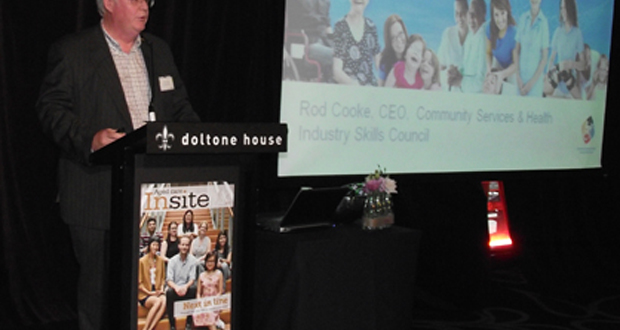Aged-care leaders share strategies for meeting the surge in demand.
The workforce must gain about 78,000 employees in the next decade to maintain the current ratio of aged-care workers to people over the age of 85, attendees at Aged Care Workforce Strategy 2024 were told on Wednesday.
The forum brought industry representatives together to discuss how to deliver this much larger workforce, and meet the increased demand for care.
“There will be far greater demand for productivity on the labour force than ever before in supporting our ageing population,” said McCrindle director of research Claire Madden, speaking at the event.
She said that whilst over 65s now make up 15 per cent of the population, by 2024 they will reach 17 per cent. And by 2044, 1 in 5 people are going to be aged over 65, outnumbering the under-18 age group for the first time in Australia’s history. On top of this, the average life expectancy at birth will reach beyond age 90 by 2044.
Or, put in terms of supply, in 2010 there were 10 employees in the workforce for every retiree couple; by 2050 this is expected to drop to five people per couple.
Madden said meeting the needs of such a population would require getting many more young people to enter the aged-care sector, and that this group would need guidance and direction from those who have been working longer.
Action plan needs broad reach
Rod Cooke, CEO of the Community Services & Health Industry Skills Council, said the national plan to meet this demand needs to establish an approach to planning that incorporates the whole community and workforce and involves transparent planning systems and processes.
For example, “Australia will need to import a significant number of the required workers”, Cooke said, noting that a large part of the workforce is already made up of people from a non-English speaking background.
Cooke told the conference that if action is not taken, the system will struggle to provide consumer-directed care, support clients with co-morbidities and afford a basic care and support system.
The impact of mismanagement
Tracey McDonald, RSL LifeCare chair at the Australian Catholic University, said registered nurse participation in aged care had been, in effect, halved over the past eight years.
She said nursing had been de-activated through mismanagement of nurses as a resource, the removal of clinical career pathways and ageist employment practices.
“Over the past 15 years in aged care, management has become pretty much the only real career progression from clinical nursing,” she said. “The clinician pathway to specialist and consultant nursing has withered through lack of corporate management investment.”
McDonald said organisations need a nursing workforce strategy that involves a regular census of nurses, flexible work that still delivers services to the standard required, and a prejudice-free workplace, as well as one that acknowledges that transition programs exist for nursing graduates, nurses from other sectors, and international and retiring nurses.
All executives must know the difference between nursing and management, and between management and leadership, she said.
Retention mode
Cynthia Payne, CEO of SummitCare, agreed with McDonald’s sentiments on career progression, and said SummitCare got it wrong by taking the registered nurse role back to a centralised function.
However, she added, “We haven’t stopped innovating on legitimate clinical career succession planning versus alternate forms of leadership.”
In terms of the overall workforce, Payne said one thing a service provider should definitely do to retain workers is make genuine efforts to thank them.
“I’m appalled at the number of organisations that don’t make an effort to recognise and value longevity in their businesses,” she said.
Do you have an idea for a story?Email [email protected]
 Aged Care Insite Australia's number one aged care news source
Aged Care Insite Australia's number one aged care news source

